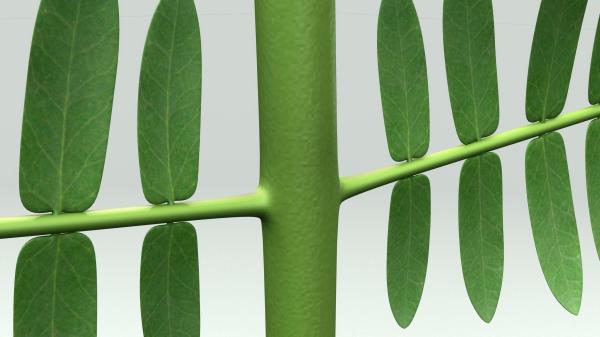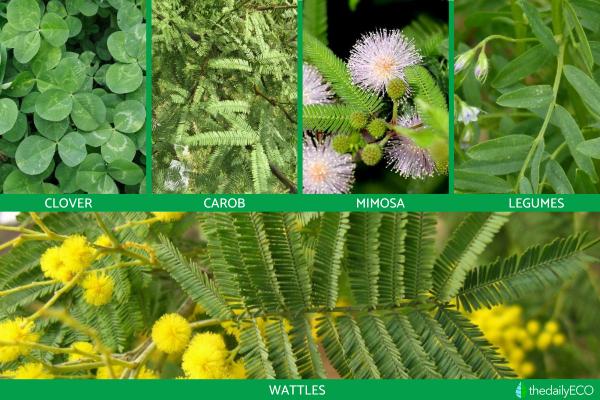
Leaves are the plant organs specialized to capture light energy through photosynthesis. Leaves come in different sizes, colors, and shapes, and there are several ways to classify them. Leaf morphology describes the different ways in which plant leaves are classified. All trees have a leaf structure that can be classified as either simple or compound. Knowing which category a leaf belongs to can help you determine what kind of tree you are looking at.
The following article by thedailyECO explains what compound leaves are, their types and examples.
What are compound leaves?
As the primary sites of photosynthesis, leaves produce the food for plants, which in turn feed and sustain all land animals.
Leaves are an integral part of the stem system. They are connected to the rest of the plant by a continuous vascular system, allowing free exchange of nutrients, water, and end products of photosynthesis (especially oxygen and carbohydrates) to the various parts of the plant.
All trees have a leaf structure that can be classified as either simple or compound.
Difference Between Simple and Compound Leaves
Simple leaves are those that have a single whole or divided leaf, but these cuttings do not form independent pieces. A simple leaf consists of a leaf base, a petiole (which may be absent and in this case the leaf is stalkless or decumbent) and a leaf blade.
The margins or edges of the simple leaf may be smooth, serrated, lobed, or divided. Lobed leaves have gaps between the lobes, but never reach the midrib.
Compound leaves, on the other hand, are those that have more than one leaf blade and form independent parts called leaflets. Unlike a single leaf, the compound leaf has leaflets attached to the midvein and has its own petioles. In a compound leaf, there are:
- A petiole connecting the stem to the rachis
- A primary rachis (depending on the type of leaf, there may also be a secondary or tertiary rachis)
- A limb formed by the various leaflets
- Petioles that support the leaflets.
Although the difference between these two types of leaves seems obvious at first glance, it is sometimes confusing to know whether you are looking at a leaf or a leaflet.
The best way to be sure is to locate the lateral buds along the branch or twig. All leaves, simple or compound, have a bud node where the petiole connects to the branch. Compound leaves have a bud node at the base of each petiole or leaf stalk, but do not have a bud node at the base of each leaflet on the midribs and rachis of the compound leaf.
You may be interested in this other article, where we explain the different types of chlorophyll and their function. Read on to learn more.

Types of compound leaves
Compound leaves can be classified into three different types:
Pinnate
In fact, the term pinnation refers to the process by which multipart leaflets form on both sides of the rachis.
There are also different types of leaflet arrangement, which we discuss below.
- Paripinnate: when there are two leaflets at the tip of the rachis or axis.
- Imparipinnate: when there is one leaflet at the tip of the rachis or axis.
- Opositipinnate: when the leaflets are opposite along the rachis or axis.
- Alternipinnate: when the leaflets alternate on both sides of the rachis or axis.
Double pinnate
This compound leaf arrangement has several names, including bipinnate, bipinnate, and bipinnate. The leaflets are arranged on secondary stems that grow out of the rachis. In other words, the leaves are bipinnate when the leaflets are also divided into smaller leaflets.
Palmate
As if out of the palm of a hand, palmately compound leaves have leaflets radiating from the center of their attachment to the end of the petiole, which in turn is attached to the branch. The rachis is practically invisible because it is contracted.
You might also be interested in this other article, where we talk about xerophytic plants.
Examples of compound leaves
There are several plants in nature that have compound leaves, here are a few examples:
Vlovers
Clovers are species with compound leaves, some of which may have 3 leaflets and others 5 or more. Among the species that have 3 leaflets we find:
- White clover (Trifolium repens)
- Red clover (Trifolium pratense)
- White sweetclover (Melilotus albus)
- Yellow sweet clover (Melilotus officinalis )
- Alfalfa (Medicago sativa)
- Black Medic (Medicago lupulina)
Among the species that have 5 or more leaflets, we find:
- Bird's-foot trefoil (Lotus corniculatus)
- Lotus (Lotus tenuis)
- Common Vetch (Vicia sp)
Carob trees
Carob trees, trees of the legume family, also have compound leaves. For example:
- Prosopis alba
- Prosopis nigra (have bipinnate leaves, with each of the leaflets containing 25 to 40 leaflets)
Mimosas
Mimosa is a genus of plants in the legume family, with a wide variety of species inhabiting both hemispheres. Most of them have bipinnate leaves. Here are some examples:
- Shameplant (Mimosa pudica)
- Giant sensitive tree (Mimosa pigra)
Legumes
Many edible legumes have compound leaves. For example:
- Soybean (Glycine max)
- Lentil (Lens culinaris)
- Common bean (Phaseolus vulgaris)
- Pea (Pisum sativum)
- Broad bean (Vicia faba)
Acacias
Acacias are a genus of trees that, like all the above examples, belong to the legume family and have compound leaves. Among them, we find:
- Silver wattle (Acacia dealbata)
- Australian blackwood (Acacia melanoxylon)
- Long-leaved wattle (Acacia longifolia)
You may also be interested in this other article, where we talk about what gymnosperms are.

If you want to read similar articles to What Is a Compound Leaf in Plants?, we recommend you visit our Biology category.